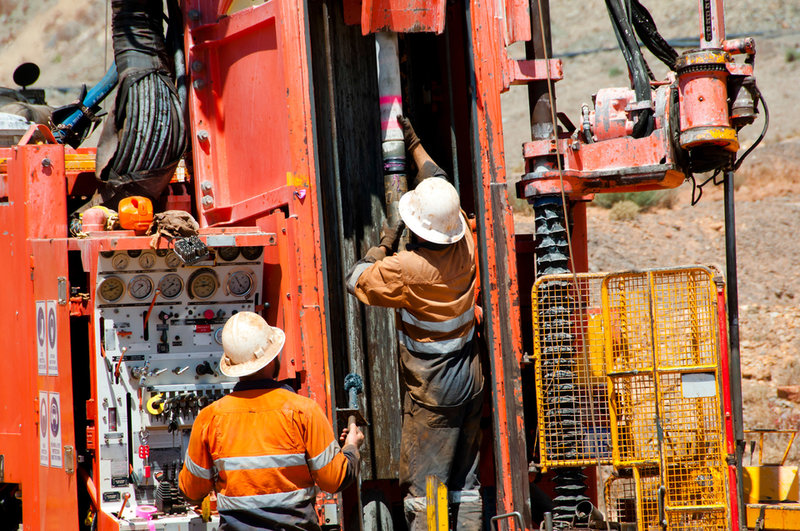Cover Story
Reforming Australia’s labour laws, and BHP’s warnings
Australia’s “same job, same pay” bill has raised concerns for mining companies like BHP. Smruthi Nadig explains the bill and how it might affect future investment in Australia’s mining industry.

Permanent mine staff will no longer receive a better rate of pay. Credit: Adwo via Shutterstock.
Australia’s mining industry has generated A$2.4trn ($1.54trn) in resources and export income over the last ten years. Even though most minerals mined in Australia are exported, mining still forms the bedrock of 21% of the economy.
The industry has paid A$143bn in company taxes, A$112bn in royalties, and A$252bn in mining wages, according to the Minerals Council of Australia. It also estimates that 50 new lithium mines, 60 new nickel mines, and 17 new cobalt mines will be needed worldwide by 2030 to supply the demand for electricity storage alone. The implicit hope remains that many of these mines will come to Australia.
The Council anticipates a A$100bn investment annually, above current levels, to produce the mineral commodities needed for the world to achieve net-zero emissions by 2050. This presents a significant economic opportunity for Australia, but more is needed.

BHP CEO Mike Henry. Credit: Carla Gottgens/Bloomberg via Getty Images.
“That [achieving net zero] is going to require significant multiples of metals and minerals in coming decades compared to the last few – two times as much copper, four times as much nickel, twice as much steel, twice as much potash – and so on for the other critical metals and minerals,” said Mike Henry, CEO of Australian mining company BHP at the World Mining Congress in late June.
It takes a considerable amount of time for new mines to move from the discovery phase to the production phase. Nickel mines can take up to 18 years to move forward, with copper mines taking up to 15 years. Unless the sector has favourable investment conditions now, it will miss future investment opportunities due to this lag, the Council said on its website.
There are more than 100 potential mining and processing projects in Australia, with a combined investment value of over A$50bn. These have the potential to create 20,000 operational and 30,000 construction jobs, the council says, an attractive political prospect. So what are political forces doing to seize the day, today?
Reforming labour laws in Australia
In September, the Australian government moved ahead with a “same job, same pay” (SJSP) bill that changed workplace laws, which many businesses condemned. The bill amended the law to ensure hired workers are paid the same as employees in the same company doing the same work.
The bill’s moniker refers to the idea that a labour-hire employee should receive at least the same full rate of pay as a permanent staff member. This covers loadings, financial allowances, incentive-based bonuses, and rates for overtime or penalties.
Many large mining companies and the Minerals Council argued the amended policies would “increase their costs and make it more difficult for them to compete”.
The Minerals Council argued the amended policies would “increase their costs and make it more difficult for them to compete
In BHP’s annual shareholder meeting in Adelaide on 1 November, CEO Henry warned the SJSP bill would damage the Australian economy. He shared concerns over the broader business community that the bill would increase costs and reduce Australia’s investment opportunities “at a time when competition for investment is fierce globally, and other nations are working to become more competitive and more attractive”.
However, the Mining and Energy Union argues that the bill would only increase wage costs for those companies who have used labour-hire loopholes to cut wages and undermine collective bargaining. While the mining companies “claim it would remove incentives and rewards for workers with more skills and experience”, the Union’s website on the bill calls it “nonsense”.
Professor Andrew Stewart, an industrial relations expert from the University of Adelaide, told The Guardian: “There’s no issue about different skill levels, the comparison would be to a provision in the enterprise agreement to be paid the same as someone with your skills or experience. If that’s [how] it’s implemented, it is not a cause for concern. I’m not sure the fears can be justified.”
How does the bill affect BHP?
According to The Sydney Morning Herald, BHP employs 35,000 people in Australia, with roughly 8000 service contractors. According to the publication, BHP has already stated that if the legislative amendments rush through parliament, they might cost the company around A$1.3bn annually and jeopardise jobs.
The company plans to combine its Carrapateena and Prominent Hill mines with the Olympic Dam asset and Oak Dam project to create a super-project called Copper South Australia. However, potential development plans could lose up to $2bn under the reforms, the company estimates.
Potential development plans could lose up to $2bn under the reforms, the company estimates.
Henry says that the firm fiercely opposes the bill, not just because of the cost, but also because of the consequences it will have on Australia's employment market, productivity, and global competitiveness. Ken Mackenzie, chairperson of BHP, also backed Henry on the potential threat to its assets: “The right conditions will need to be met for Copper South Australia to compete with other options in our capital allocation framework.”
Additionally, Johan van Jaarsveld, BHP’s chief development officer, told the Melbourne Mining Club that Australia could become less attractive to global capital on many fronts and that the country has the potential to “go backwards a little bit.”
“And where you have lots and lots of opportunities to invest, across many countries in the world, it becomes really important not only for BHP but for the entire investment world that Australia remains stable and Australia remain a competitive, attractive destination for capital,” he said.
Investments and strategies for the critical minerals future
“The international investment landscape is shifting rapidly as governments worldwide race to incentivise investment in diversifying and expanding critical minerals supply chains,” said Madeleine King, Minister for Resources.
The Albanese government announced a A$2bn expansion in critical minerals financing to “help the transition to net zero, boost the economy and support more jobs and opportunities for Australians”.
Amid many concerns by miners around global investment, Australia and the US signed the Climate, Critical Minerals and Clean Energy Transformation Compact, establishing climate and clean energy as a central pillar of the Australia-United States Alliance.
Like the US Inflation Reduction Act, Canada’s Critical Minerals Strategy, and the EU’s Green Deal Industrial Plan, the Australian government has also released its Critical Minerals Strategy to grow the industry and transition to achieve net zero emissions. The governments are working towards securing their own critical minerals supplies to accelerate the energy transition.
While BHP has not been the only mining company to criticise the Australian government on its labour policies and achieving net zero and energy transition, the question remains: what good or damage the reformed bills and strategies could do in the long term?